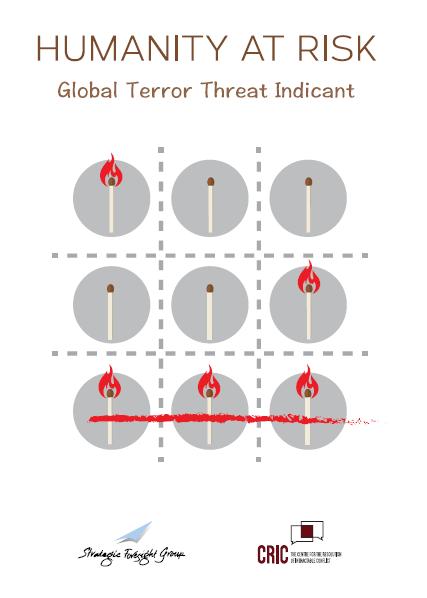Jihad-Joe - Extremism Infiltrating Pakistan's Defence Forces
|
|
June, 2011
By Gitanjali Bakshi
|
A spate of attacks on Pakistan's navy has uncovered a possible infiltration of terrorism into the rank and file of the country's defence forces. Although not discussed much in the media, the attack on PNS Mehran was the third of a series of attacks on the Pakistani navy stationed in Karachi. Before Mehran there were two other attacks on naval buses - one on April 28th and the second two days later on the 30th. Why and how was the navy being attacked repeatedly within Karachi? According to Saleem Shahzad, Pakistan's Bureau Chief for Hong Kong-based Asia Times, the first two attacks were traced back to Al Qaeda. Shahzad claimed that certain naval officers were detained for their links to the terrorist organization and the bombings of three navy buses were �€œwarning shots�€ to force the navy into a negotiation process. Shahzad claims that the extent of infiltration became concerning when AQ was able to track the whereabouts of these officers once they were brought in for questioning. When the negotiation process fell through and AQ chief Osama Bin Laden was killed in Abbottabad the last retaliatory shot on PNS Mehran was of a much larger scale.
Neither the government nor the Pakistan army has confirmed Shahzad's story of an active AQ cell in the ranks of the armed forces. However, his abduction and consequent death -- only two days after he released the story -- is a pressing sign of its validity. In the immediate wake of the attack on PNS Mehran base there were suspicions that the perpetrators had insider information. A few weeks later two suspicious Iraqi men were arrested outside the American consulate in Karachi. A week before the Mehran attack the Saudi consulate was targeted in two separate incidents. These three disparate incidents when put together also suggest a certain level of credence to Shahzad's allegations. Perhaps the navy was engaged in talks with AQ because they were concerned that it had gained a significant foothold and level of influence from within; and perhaps the Saudi government was assisting the negotiation process.
Even the recent targeting of AQ Chief Ilyas Kashmiri confirms Shahzad�€™s story as his notorious 313 brigade was allegedly behind the Mehran attacks according to Asia Times. In any case, the scope and method of the three attacks on the navy point to more than just a disgruntled and suspended officer �€“ Kamran Ahmed - it points to a deeper infiltration of extremism and militancy within Pakistan's defence machinery.
There are other incidents that reveal that the infiltration of extremism and militancy into Pakistan's military juggernaut is deep-seated. According to a Wikileaks document, Pakistani Air Vice-Marshal (AVM) Khalid Chaudhary told U.S. officials in 2006 that extremism is rampant in the lower ranking officers of the country's Air Force and it was his belief that these individuals were sabotaging F-16s deployed for security operations along the Afghan border. Punjab Governor Salman Taseer's assassination in January sparked similar concerns about the allegiance of the elite security forces as well; so much so that a rigorous screening process was instituted to root out officers who showed a penchant towards fundamentalism and it was rumoured that President Zardari was hiring Americans and not Pakistanis as bodyguards. Recently Pakistani news reported that a ban was placed on vitriolic religious speeches in mosques close to army cantonments because the establishment wanted to prevent officers from being influenced by negative forces.
These incidents also reveal a certain change in the relationship between the armed forces and militancy. Extremism and militancy were manipulated in the past by Pakistan's defence machinery to attack external targets - as was the case with Zia-ul Haq's support for anti-Indian Kashmiri militant organizations and the ISI's support for anti-Soviet Taliban forces. Presently, however, extremism within the ranks of the army is being used by external militant forces to target the establishment itself. There are officers in the armed forces sympathetic to the cause of Al Qaeda and the TTP. This is one of the reasons why Pakistan has decided to conduct talks with the TTP, following a format similar to Afghanistan's peace jirgas. However if operations in North Waziristan ensue and NATO drone attacks continue to rise in number in the next few months these talks will be derailed.
Increasing pressure by the U.S., before their scheduled pull out from Afghanistan in 2014, will force the Pakistani establishment to make some hard-pressed decisions toward militancy. There will be a rise in anti-U.S. sentiment and this will only leave the army more vulnerable to the rise of extremism within its ranks. This could lead to a split between pro-West and pro-Taliban forces in the Pakistani Army and the discord could even result in a potential mutiny or revolt from within. In this context concerns over Pakistan's nuclear stability are justified. Former ISI chief Hamid Gul has admitted that the destruction of the 2 P-3C Orion (anti-submarine maritime surveillances aircrafts) at the Mehran base has left Karachi nuclear plant Kanupp-1 vulnerable to an attack by sea via submarines. If extremism within the army spirals out of control it will be a serious threat to Pakistan's internal stability and this instability can pose a serious challenge for the U.S., India and the region at large.
Related Publications
Related latest News
Related Conferences Reports
-

P5 Experts Roundtable on Nuclear Risk Reduction
Download:Geneva Roundtable Report
-

Roundtable on Global Security and Catastrophic Risks
Download:Report on RT revise





